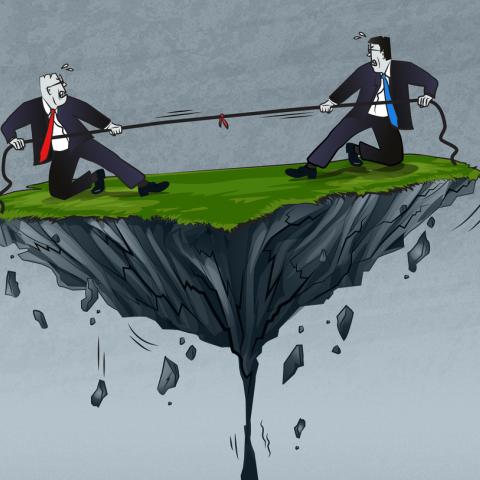Subscribe or die

By Ian Silvera
You still occasionally see horses and carts. The beasts are usually cantering towards a market fair and the riders are often made out in period dress. They never did die out, despite the popularisation of automobile thanks to Henry Ford and his Model T, but they’re a rarity, a nostalgic ride from the past that you would never pick even over a clapped-out Rover to get to work.
The print newspaper industry, which kicked off proper in the 16th Century, has been facing its own horse and cart-style demise for quite some time. Internet penetration is now around 95% of the addressable market in the West, according to Mary Meeker’s 2019 Internet Trends report, and the latest data from Ericsson estimates that smartphones now account for two-thirds of global mobile connections.
We are all, well pretty much all of us, digital now and that means print newspapers are amid a structural and irreversible decline. The Covid-19 outbreak has catalysed this phenomenon, with news media groups Reach (the company formerly known as Trinity Mirror) and the Daily Mail and General Trust noting the negative impacts of the UK’s lockdown in recent trading updates.
“Circulation revenues are also now expected to be adversely affected as some readers are unable to buy newspapers from retail outlets and if deliveries are not possible,” the latter business told its shareholders.
These companies have mass general print newspapers in their stables of media brands. But their competitors and peers, who draw on more niche and targeted readerships, are also suffering. City AM, the ‘business with personality’ freesheet, first stopped its print publication, and then furloughed a majority of its staff. A skeleton crew have been left to man the website.
The Evening Standard, which relied heavily on the London Underground network to distribute its paper, has decided to mail more than 100,000 copies directly to people’s homes. Editor George Osborne announced that decision before Transport for London revealed today that 240,000 passengers used the Tube on Friday 27 March, down from 4.2 million a year ago.
Even digital-only outlets are in pain. BuzzFeed has announced another round of lay-offs, it was reported yesterday. These sites may be getting record traffic figures, but, without advertisers, it’s hard to turn those clicks into cash. This isn’t an issue for publications with paywalls, though.
A senior business reporter at a well-known title told us that subscriptions had risen “substantially” as consumers sought out trusted and respected news brands in a time of crisis and uncertainty, comparable to the ‘Trump-Bump’ the New York Times received before and after the 2016 White House election.
However, despite the strength of this business model, employment anxiety remains. “I don’t think anyone in any job feels particularly safe. When you see other newspapers, even if they could be different beasts, you do think ‘that could do me’,” the reporter said.
Broadcasters, meanwhile, have become the go-to outlets for press conferences and the latest analysis on and around the Coronavirus. A source at Sky News told us that viewing figures had surged up to 500% on some platforms, with big increases across the board TV, YouTube and social media. It remains to be seen if they can turn those extra eyes into cash, however.
As to how the lockdown has impacted the day-to-day of journalists, another business reporter on a national title told us that it hasn’t changed much. “To be honest with what we have to cover, we often get a lot of our stories from phone calls, which we’re able to do from home anyway,” she said. “But our days are spanning much longer with the hours that we are working.”
Journalism continues to survive, then, and in some cases it thrives. But some media versions of the horse of cart will have to park-up for good, while others, including the title that covers one element of the equine the most, The Racing Post, will no doubt be up and running serving a targeted and sometimes niche audience.








